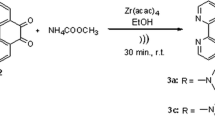It is known that many agents influence the capacity of cells to produce reactive oxygen species. However, assaying these agents, both those that stimulate and those that inhibit reactive oxygen production, can be complicated and time consuming. Here, a method is described in which two different cocktails are employed to stimulate luminol-dependent chemiluminescence (LDCL). These cocktails are comprised of luminol, with either sodium selenite [IV] (SEL) or tellurite [IV] (TEL) (where IV and VI refer to the 4+ or 6+ oxidation state of selenium or tellurium salts, respectively), morpholinosidonimine (SIN-1), serum albumin and Co2+, called the SIN-1a (with selenite) and SIN1b (with tellurite) cocktails, respectively; or luminol with glucose oxidase (GO), sodium selenite [IV] and Co2+, called the GO cocktail. The cocktails functioned best in Hank’s balanced salt solution (HBSS) containing 1% glucose at pH 7.4, incubated at approximately 22°C. Within 30–60 s there was a burst of luminescence, which lasted for 7–10 min. In 100% ethanol, the SIN-1 cocktails also generated LDCL to 70% of that produced in HBSS. Neither selenite [VI], seleno-cystine, seleno-methionine, nor the selenium-containing drug, ebselen, could replace SEL. Moreover, the effects of the NO-donor, SIN-1, could not be replicated by the oxyradical generators, xanthine-xanthine oxidase or hypochlorous acid. Only low levels of luminescence were generated by combinations of the peroxyl radical generator, 2,2′-azobis-2-amidinopropane dihydrochloride (AAPH) with either SEL or TEL. It is suggested that light emission induced by the SIN1 cocktail results from the oxidation of SEL [IV] to the [VI] state, possibly due to the generation of mixtures of superoxide, peroxide, peroxynitrite and also of unidentified oxidant species, catalyzed by CoCo2+. However, the involvement of hydroxyl radicals in LDCL could not be confirmed by use of either dimethyl thiourea or by electron spin resonance (ESR). LDCL induced by the two cocktails is strongly reduced by phosphates, EDTA, deferoxamine, CuCo2+, MnCo2+, as well as by the “classical” antioxidants superoxide dismutase (SOD), ascorbate, vitamin E, uric acid or thiols. It is suggested that these chemiluminescence cocktail systems can be used to determine the total anti-oxidant capacities of biological fluids and commercially available anti-oxidants.
Similar content being viewed by others
Author information
Authors and Affiliations
Rights and permissions
About this article
Cite this article
Ginsburg, I., Sadovnic, M., Oron, M. et al. Novel chemiluminescence-inducing cocktails, part I: The role in light emission of combinations of luminal with SIN-1, selenite, albumin, glucose oxidase and Co2+. Inflammopharmacology 12, 289–303 (2004). https://doi.org/10.1163/1568560043696263
Published:
Issue Date:
DOI: https://doi.org/10.1163/1568560043696263




